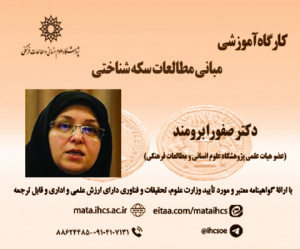ارزیابی میزان آلودگی و توزیع مکانی فلزات سنگین موجود در گرد و غبار جاده ای (مطالعه موردی، مراکز بهداشتی شهر یزد) (مقاله علمی وزارت علوم)
درجه علمی: نشریه علمی (وزارت علوم)
آرشیو
چکیده
افزایش آلودگی درنتیجه رشد صنعتی شدن و شهرنشینی به دلیل تاثیر بر سلامت انسان به یک نگرانی مهم در کشورهای در حال توسعه تبدیل شده است. از این رو در مطالعه حاضر به منظور بررسی آلودگی، 70 نمونه گردوغبار خیابانی از مراکز درمانی شهر یزد جمع آوری و در آزمایشگاه برای تعیین محتوای عناصر آهن، کبالت، منگنز، روی، کروم، سرب، کادمیوم، نیکل، مس، آرسنیک و آلومینیوم با استفاده از روش طیف سنجی القایی هضم شدند. الگوی مکانی غلظت فلزات با استفاده از روش درون یابی IDW در نرم افزار GIS تهیه شد. همبستگی زوجی بین فلزات با استفاده از همبستگی پیرسون و طبقه بندی فلزات مشابه از نظر منشأ احتمالی با استفاده از خوشه بندی سلسله مراتبی انجام شد. همچنین سطح آلودگی با استفاده از شاخص های فاکتور غنی شدگی، شاخص زمین انباشت، شاخص آلودگی و آلودگی یکپارچه تعیین شد. بر اساس نتایج، روند میانگین غلظت فلزات به ترتیب آهن (16/23587)، آلومینیوم (94/18074)، روی (54/602)، منگنز (7/445)، سرب (95/80)، مس (86/60)، کروم (83/46)، نیکل (09/34)، کبالت (2/10)، آرسنیک ( 29/0) و کادمیوم (21/0) میلی گرم بر کیلوگرم برآورد شد. بر اساس الگوی توزیع مکانی بیشترین مقادیر غلظت فلزات در مراکز درمانی نزدیک به خیابان دوطرفه و ایستگاه خط واحد مشاهده شد. بیشترین مقدار غنی شدگی در عناصر روی و در نتیجه کلاس غنی شدگی زیاد مشاهده شد. همچنین بالاترین مقادیر شاخص زمین انباشت، درجه آلودگی و آلودگی یکنواخت نیز مربوط به عناصر روی و سرب بود. همبستگی معنی داری بین عناصر آلومنیوم-آهن-کبالت-منگنز-کروم، کادمیوم- کروم-سرب و نیکل-مس در سطح 1 درصد مشاهده شد در حالی که آرسنیک هیچ گونه همبستگی با سایر عناصر نداشت. بر اساس خوشه بندی سلسله مراتبی عناصر کبالت، منگنز، کروم، کادمیوم، سرب، نیکل، مس و روی منشأ انسانی، در حالیکه آلومینیوم و آهن منشأ طبیعی داشتند.Assessment of Heavy Metal Pollution Levels and Spatial Distribution in Road Dust (A Case Study in Health Centers of Yazd City)
The increase in pollution resulting from industrialization and urbanization has become an important concern in developing countries owing to its impact on human health. Therefore, in the present study, to investigate the pollution, 70 street dust samples were collected from medical centers in Yazd and in the laboratory to determine the content of Fe, Co, Mn, Zn, Pb, Cr, Cd, Ni, Cu, As and Al was digested using induction spectroscopy. The spatial pattern of the metal concentration was prepared using the Inverse Distance Weighted (IDW) interpolation method in GIS software. Pairwise correlation between metals was performed using Pearson's correlation, and classification of similar metals in terms of possible origin was performed using hierarchical clustering. In addition, the pollution level was determined using the enrichment factor, geo-accumulation index, pollution index, and integrated pollution index. According to the results, the trend of the average concentration of metals is Fe (23587.16), Al (18074.94), Zn (602.54 mg/kg), Mn (445.7 mg/kg), Pb (80.95 mg/kg), Cu (60.86 mg/kg), Cr (46.83 mg/kg), Ni (34.09 mg/kg), Co (10.2 mg/kg), As (0.29 mg/kg), and Cd (0.21 mg/kg). Based on the spatial distribution pattern, the highest concentrations of metals were observed in medical centers near the two-way street and single-line station. The highest amount of enrichment was observed for Zn, and as a result, a class of high enrichment was observed. The highest values of the soil accumulation index, degree of pollution, and uniform pollution were related to Zn and Pb. A significant correlation was observed between––Al and Fe Co–Mn Cr, Cd-Cr-Pb, and Ni-Cu elements at the 1% level, while As did not correlate with other elements. Based on the hierarchical clustering of elements, Co, Mn, Cr, Cd, Pb, Ni, Cu, and Zn were of human origin, while Al and Fe were of natural origin.







